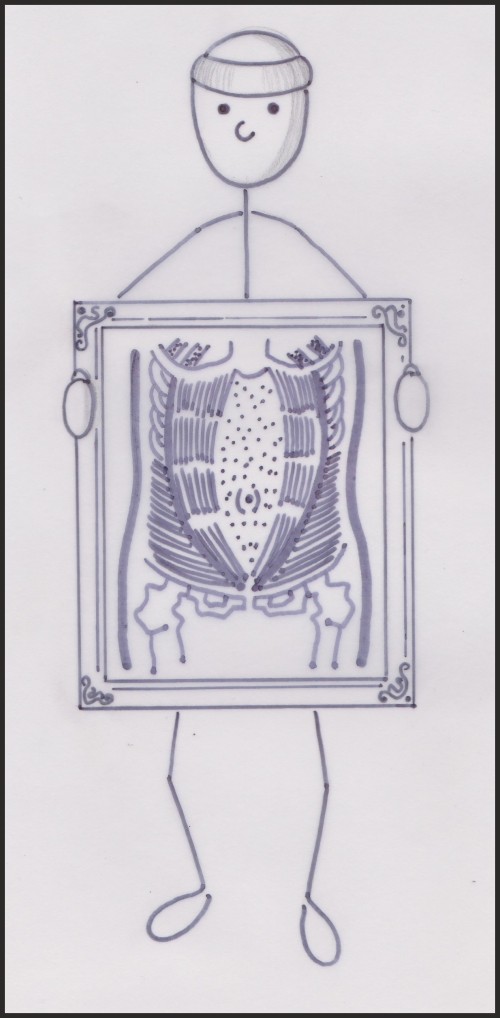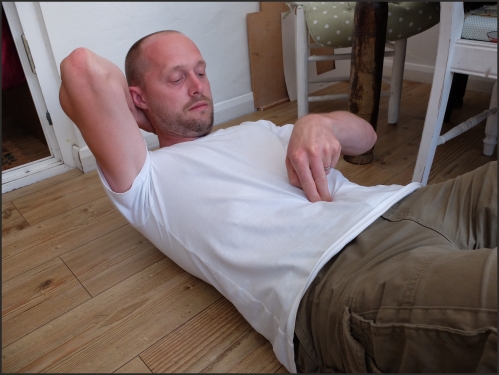Diastis Recti – The effects of Separation:

For this article I have decided to focus on a subject close to my own heart, having had two children of my own. This subject being Diastis Recti – essentially a separation of the rectus abdominal muscles. How delightful!
In my early training I was very aware of the topic and had some excellent Pre and Post-Natal Pilates instruction with a very intense but superb teacher. However, it is only since working with clients and gone through two pregnancies that I have become more focused on the subject.
So, in a nutshell, Diastis recti is a shearing or tearing of the rectus abdominal muscle. It can happen in one or several areas down the Linea alba sheath which connect the two sides of the rectus muscle….it sounds quite hideous but luckily the body produces a lovely hormone – relaxin – during pregnancy, and as a result you don’t feel anything untoward happening.
It is not just pregnant women who are affected by Diastis recti. This separation can also occur in men and women who are overweight, and can be a key contributer to back pain – a huge reason to help “close the gap” and encourage better spine health.
To test for separation:
Lie on your back with knees bent. Support the head with one hand whilst placing the other hand (finger tips pointing downwards) into the rectus abdominals. (That’s the bit running from just below your breast bone, at the top of your tummy, to your belly button!) Curl forwards far enough to feel the muscles close in towards the fingers. Feel all the way down from under ribs to hear the pubic region, checking how many fingers make the separation….none or one finger separation is marvellous. Two fingers is good but focus is required. More than two fingers of separation could really benefit from extra attention and extra curricular exercises done very regularly.
The good news is that it is possible to correct this shearing – even many years after giving birth – so do think about checking and adjusting the way your abdominal exercises are performed.
Here are some exercises to help. The more regular you do them the better, and in partnership with some specific pelvic floor work, the area should rapidly improve and also help relieve those niggling back issues.
Those with three fingers or more separation, please avoid any excessive twisting abdominal movements and plank positions if you’re not strong enough to lift the abdominal wall against gravity.
Also, a huge caution for those newly post natal and who have had a traumatic birth/caesarian or prolapsed pelvic floor….I can recommend a wonderful book to guide you through the early days of exercises for the new Mum – ‘Judy Difiore “Postnatal Fitness” ‘. This book has great diagrams and practical information with regards to post natal fitness, a fabulous reference book.
Ab curl with hold adding knee floats and slides :
Start by lying supine – knees bent, feet flat, hip width apart and head supported in hands. Take a curl forwards, looking towards the knees, and float one knee up over the hip. Lower the leg down with the abdominals continually contracted, not forgetting to breathe. Progress to lifting one knee followed by the other, then lowering back down again. Or, to simplify, take leg slides by flexing the foot and sliding a heel along the floor, lengthening leg and returning to start position.
Pelvic tilts with legs raised :
Starting supine, possibly with a cushion or small ball between the knees, feet raised on several heavy books, edge of sofa or sturdy chair or even a stability roll. Exhale, drawing your abdominals in deeply and curling the spine sequentially from the floor (making sure ribs remain soft and tailbone tucked under). Inhale as you hold this position, then exhale to return to the start position with a rolling action.
Pelvic floor exercises, working slowly and with speed!:
Anywhere, anytime…..very frequently….either quick pelvic exercises ie pulsing the pelvic floor muscles 10 times, rest and repeat; or pulling up the pelvic floor muscles and holding for a count of 10 and repeating 5 times.
Enjoy exploring those abdominals and helping them on their journey to better connection and strength…
Keep smiling!
Heather
